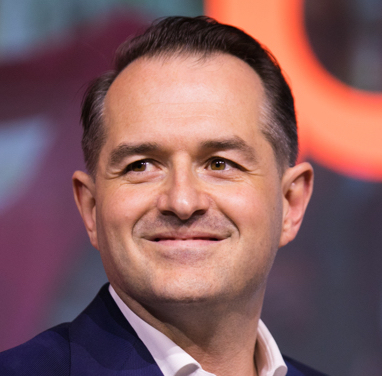
The education landscape was already changing before the pandemic. COVID-19 has accelerated shifts in the ways we work and live that are causing an irreversible ripple effect for colleges and universities across the country.
The ever-expanding use of technology and automation in the workplace is putting pressure on companies, workers, and educators alike to rethink what—and how—our future workforce learns in order to be successful. T
The World Economic Forum predicts half of all employees will require reskilling by 2025, and the private sector is responding by creating innovative programs that help employees learn these new skills.
Higher education institutions have a major opportunity to collaborate with business to create new opportunities for a broader swath of the population to which a college education or new skills might otherwise be out of reach.
There are plenty of leaders —myself included—who believe deeply in the value of college-based education and want to help it evolve to meet the needs of today’s workforce and economy.
Academic-corporate partnerships have a long history
Many innovative forms of partnership between higher education and companies are emerging.
One example is enterprise education programs. InStride is at the forefront of this trend, working with companies like Starbucks and Uber to help employees without college degrees go back to school so that they can have more career advancement opportunities in the future.
While it’s true that corporations today spend over $180 billion each year on internal and external education programs, less than 2% of employees actually use them. InStride focuses on forging deeper connections between employers and academic institutions to make an impact.
Of course academic-corporate partnerships have a long history, but new models aimed at filling specific gaps are emerging, whether it’s the AI-centered collaboration between IBM and MIT or the new tie-up between the University of Pennsylvania and medical device provider Hillrom to bring “smart” technology into the hospital room.
Appalachian State University and Mars Veterinary Health are now working together to create a rigorous, four-year online program for licensed veterinary technicians. The partnership is aimed at advancing the veterinary profession and closing the gap of qualified technicians, especially in rural areas of the U.S.
This can create opportunities for people in communities particularly hard hit by recent job losses, an important consideration as the country looks to build back.
Actionable paths to affording college
Student debt relief is also a major priority as student loan debt in the U.S. is reaching nearly $1.7 trillion. While most of the calls for relief have typically been aimed at government action, there are a small—but growing—number of companies, like mine, that offer student debt relief as an employee benefit.
Banfield’s Veterinary Student Debt Relief Program has contributed more than $15M toward helping veterinarians pay off student loans since 2017 and enabled over $16M in educational debt refinancing. Among veterinarians enrolled in the program, we’ve seen an 88% retention rate.
The number of companies offering this significant incentive has doubled from 4% in 2018 to 8% in 2019, and we hope this trend will continue.
Corporations that help their employees overcome barriers to higher education receive incredible value in return, not least a more engaged, skilled, and well workforce. Of course, we can’t do it alone. Business leaders must join forces with universities to not only promote the benefits of higher education but also create actionable paths to affording college.
So, how can universities help channel students with debt into internships and jobs at companies that offer these benefits? Going one step further, what can universities do to capitalize and motivate more companies to make similar financial commitments?
Can universities team up with these companies to encourage additional local employers to add a student debt relief benefit?
Whether it’s tackling student debt or creating more pathways for adult learners, partnerships between businesses and colleges benefit everyone. Strategic alliances preserve and promote the tangible and intangible benefits of investing in higher education.
Creating these innovative options help keep finances out of the equation so people can focus on career development and long-term goals.
Brian Garish is CEO of Banfield Pet Hospital, a Vancouver, Wash.-based network of veterinary clinics.






